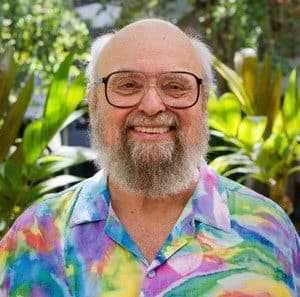
Particle Astrophysics, particularly neutrinos astrophysics and related phenomenology, Variable Stars and SETI.
Neutrino Studies
Oscillations and Mass (SuperK, K2K, and KamLAND)
Neutrino Astronomy (ANITA)
Other Budding Endeavors
Career History:
- B.A Columbia, 1957 – 1961
- G.D. Astronomy Engineer, 1961 – 1962
- M.S. University of Pennsylvania, 1962 – 1963
- Boeing Engineer, 1963 – 1965
- Ph.D. U. Washing, 1965 – 1968
- Post Doc, Research Assistant, Professor, University of Wisconsin
(1968 – 1976) - Visiting Associate Professor
(1976 – 1979) - Professor, Department of Physics and Astronomy, University of Hawai’i at Mānoa
(1980 – present)
Main research interest in neutrinos of both low and high energy.
Project involvement in:
SuperKamiokande – active collaborator taking shifts in Japan and working in several paper groups
KamLAND – Active collaborator, hosting collaboration meetings in Hawaii, and participating in paper groups.
Neutrino monitoring of reactors: pioneered long range reactor detection and monitoring studies on 2002, and began annual conference series AAP
Watchman – One of the founders, and still interested, but with withdrawal from Boulby and stalled attempt at a new detector in Fairport, negligible progress
DUNE – While JGL wrote (with three others) perhaps the first proposal for a giant liquid argon detector, LANNDD, and though a member of DUNE, he is not an active participant.
Small Neutrino and Neutron Detectors – Over the last several decades John has invented and developed various configurations of small neutrino detectors (the neutrino time cube) and directional neutron detectors (eg. the double scatter neutron camera).
Presently FROST – developing a small directional neutrino detector project (forest of scintillating tubes): Under initial feasibility testing in the lab.
HyperKamiokande – recent small NSF funding to participate, involvement developing, project under construction
Underwater Neutrino detectors – as leader of the DUMAND project to put a km^3 detector in the ocean near Hawaii, while pushing towards neutrino astronomy finally achieved by IceCube in 2022, John’s initiatives pushed neutrino astronomy starting in the 1970’s and continuing to this day. Involved with a revival of our old ideas for an underwater low energy neutrino detector Hanohano, with collaborators in Japan.
First proposed a detector to observe the neutrino mass hierarchy at a range of 55km, JUNO now being carried out in China. John not a member due to US-China politics.
Neutrinos are Smart: Given a series of colloquia on the topic of neutrinos being the only fundamental particles which retain the information of the birth time (and hence range). In fact monitoring of neutrinos from a point source (reactor) can yield distance, direction, power, and even fuel, all without external information (called NUDAR, like radar but no transmitter needed).
Gravitationally Symmetric Universe: Presently fascinated with the prospect that the universe may be half anti-gravitating antimatter, and only neutrinos can resolve the situation. Talks and paper forthcoming.


